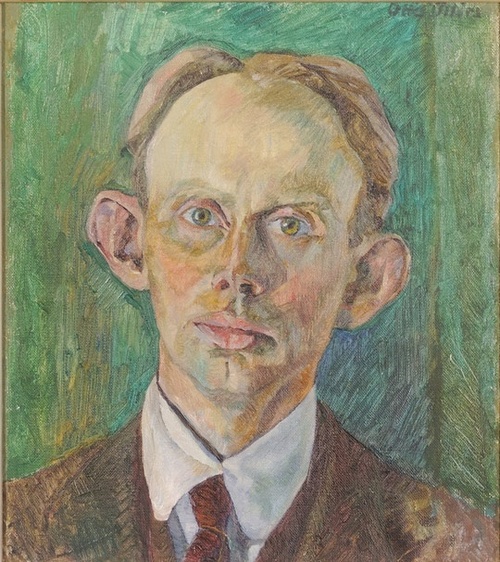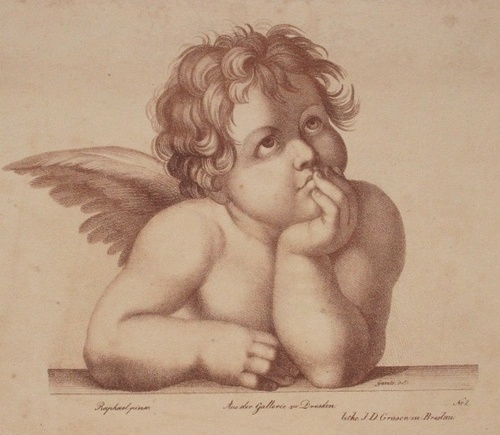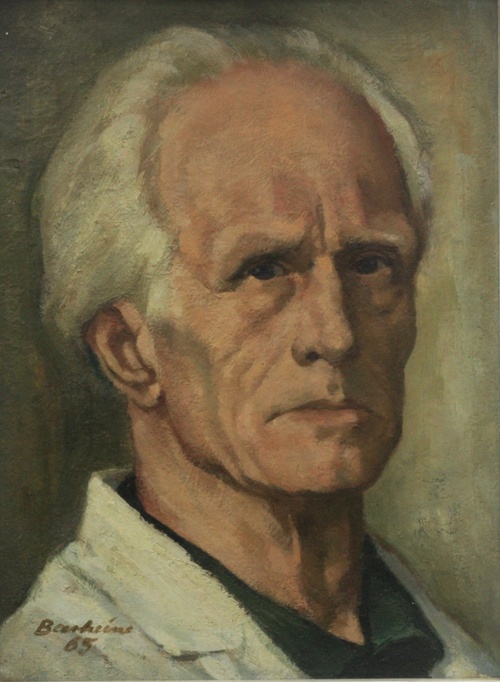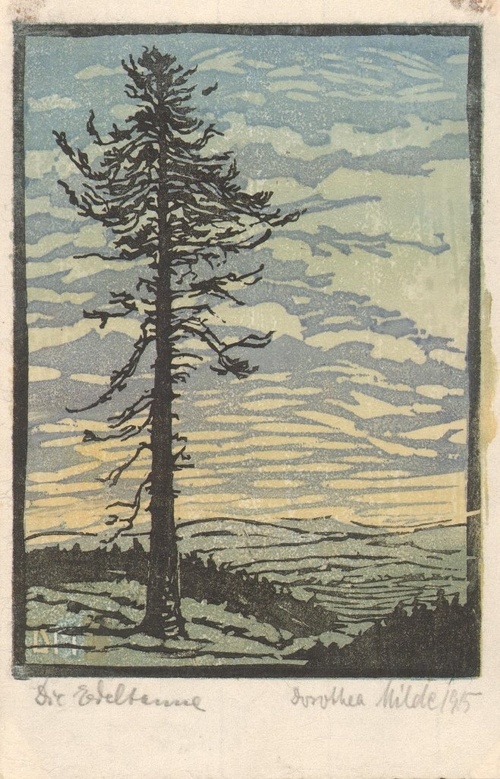
Partial estate of the painter and graphic artist Otto Illies (Yokohama 1881-1959 Wernigerode), consisting of numerous paintings, hundreds of pastels and oil studies, countless sketches, some watercolours and the artist's almost complete graphic works. The estate also contains paintings by artist friends. Many of Illie's classmates from Ludwig von Hofmann's class at the Weimar art school are represented, as is the teacher himself, in some cases with several works.
The collection also contains a large part of the written estate with autobiographical notes, poetry, memoranda to artist friends and extensive correspondence with family members and friends (including Gottfried Holthusen, Ludwig Delbrück, Ivo Hauptmann, Rudolf Siegmund, Ludwig von Hofmann). Donated to the Gleimhaus by the painter's daughters in 2008.
Research at museum-digital

Jean David Grüson (Magdeburg 1780-1848 Breslau), a descendant of Huguenots who had emigrated from France in 1689, grew up in Magdeburg-Neustadt and learnt the trade of passementerie. He studied at the Berlin Academy of Art from 1805 to 1809, then with Anton Graff in Dresden until 1813. Already active as a portrait artist in Magdeburg and later in Berlin and Dresden, he initially worked primarily in pastel, later also in oil. In 1813, he was active in Bohemia, and from September 1813, he worked in Breslau and other locations in Silesia. In 1819, he settled in Breslau, married and ran a lithographic printing business as well as an art and bookshop alongside his portrait painting. Grüson served on the executive committee of the Silesian Art Association. He died in the 1848 cholera epidemic.
Following a family donation after 2005, a portion of Grüson's estate came to the Gleimhaus. This collection consists primarily of lithographs, hand drawings, a few oil works, as well as written material and documentation. The collection mainly documents Grüson's publishing activities through original works; his portrait painting is only documented through photographs, including an extensive album of photos documenting portraits painted in Silesia.
Research at museum-digital

Julius Barheine, born in 1897 in Halberstadt, began an apprenticeship at the Louis Koch lithographic studio in Halberstadt in 1911. From 1919 to 1922, he studied at the Magdeburg School of Applied Arts. In 1924, he settled in Halberstadt as a painter and graphic artist. In 1926, he continued his training at the Vereinigte Staatsschule für Freie und Angewandte Kunst in Berlin and returned to Halberstadt in 1934. After World War II, Barheine was taken as a prisoner of war and returned to find his studio destroyed.
Barheine was active in the Association of Visual Artists. He carried out numerous public commissions, for example in the Pathological Institute of the Magdeburg Medical Academy, in the Magdeburg boathouse, in the Hans Schemm School (later the Peace School) and in the later Diesterweg School. Until his death in 1976, he was committed to promoting young artists by leading a painting circle, for which he was awarded the Halberstadt Art Prize in 1969.
After the death of his widow Hermine Barheine, née Tolle, in 1995, her last will and testament transferred the entire artistic estate to the Gleimhaus - several thousand drawings, colour woodcuts, etchings, watercolour, pastel, oil and tempera paintings as well as extensive written material and other documents. The remaining assets (property, house, and funds) were entrusted to the city of Halberstadt for management. In accordance with the will, an advisory board was set up, consisting of representatives from the city, the districts of Halberstadt and Wernigerode, a member from Wernigerode Castle, the estate administrator, and the director of the Gleimhaus. (Barheine Art Advisory Board).
Barheine’s work spans classical genres such as portraiture, nudes, floral still life, and landscapes, particularly of the Harz foreland. In 1957, the Halberstadt City Museum hosted a retrospective exhibition of his work.
Research at museum-digital

Graphic designer, dog breeder, Wandervogel leader, Quedlinburg original. Dorothea Milde had a difficult life, was of a sombre disposition and reserved nature. Her life was not only marked by two world wars, but also by several personal strokes of fate. From 1905 to 1908, she attended the Breslau art school. In 1909, she also passed her exams as a gymnastics teacher. In 1910, she began working as a drawing and gymnastics teacher at the lyceum with an associated women's school and nursery school in Quedlinburg. In the following years, she attended painting courses in Munich and Dresden. In 1914, she began studying at the Weimar School of Art, which was cut short by the outbreak of war.
From the summer holidays of 1916 onward, she regularly travelled to the Lüneburg Heath, Worpswede and the East Frisian coast for study trips and sojourns. She painted regularly in the Harz mountains; she often stayed in her weekend flat in Friedrichsbrunn and roamed the woods from there. Her artistic pursuits were intertwined with her ideals as a member of the Wandervogel youth movement, embracing both nature and a reformist way of life.
In 1925, she bought a plot of land on Bornholzweg on the outskirts of Quedlinburg and built herself a little house there. She named her property "Bergnest" (mountain nest) after her previous home in Bergstraße (mountain street).
During a holiday year in 1920, which she spent in solitude, her emotional experience intensified, and her art reached its culmination. Linked to this creative surge, the traumatic experience of her mother's death and personal disappointments, her artistic endeavours changed. In the mid-1920s, after barely fifteen years of independent work, it came to a complete standstill.
"Heaviness" is the key term used by D. Milde herself to describe both her mind and her art. She renounced colour almost completely. Since her art school days, she favoured black chalk. Soon, pen-and-ink drawing became her characteristic technique, in which she created darkness by means of the pressing density of tightly spaced lines. In addition, in 1914, she began making woodcuts, which she had been working on independently since 1916.
Dorothea Milde bequeathed her artistic estate to the Gleimhaus. It contains several hundred items of prints and hand drawings, her portfolios and sketchbooks. In addition to the artistic works, there are diaries, correspondence, documents, collections and a few photographs, as well as various writings.
Research at museum-digital